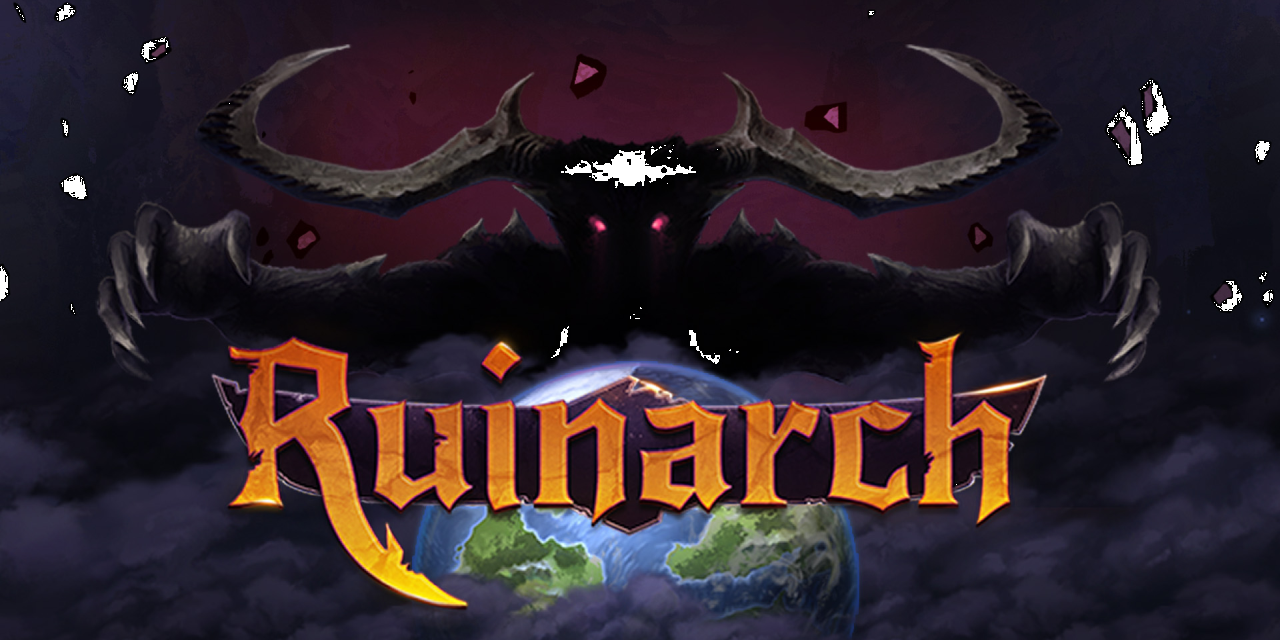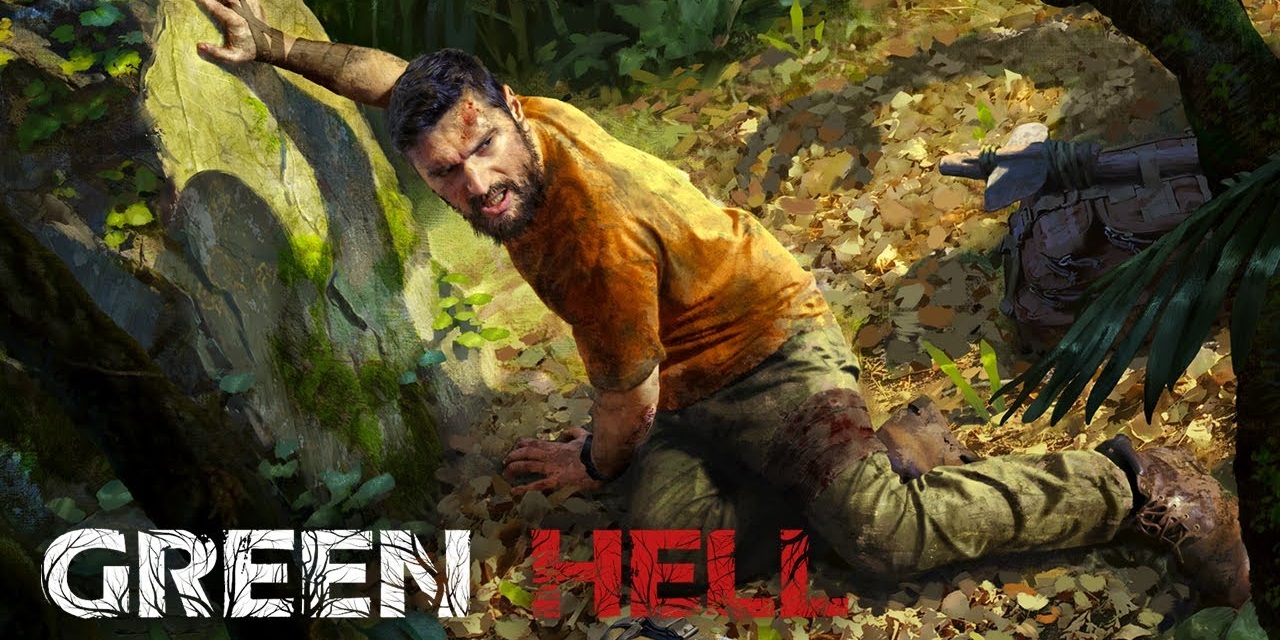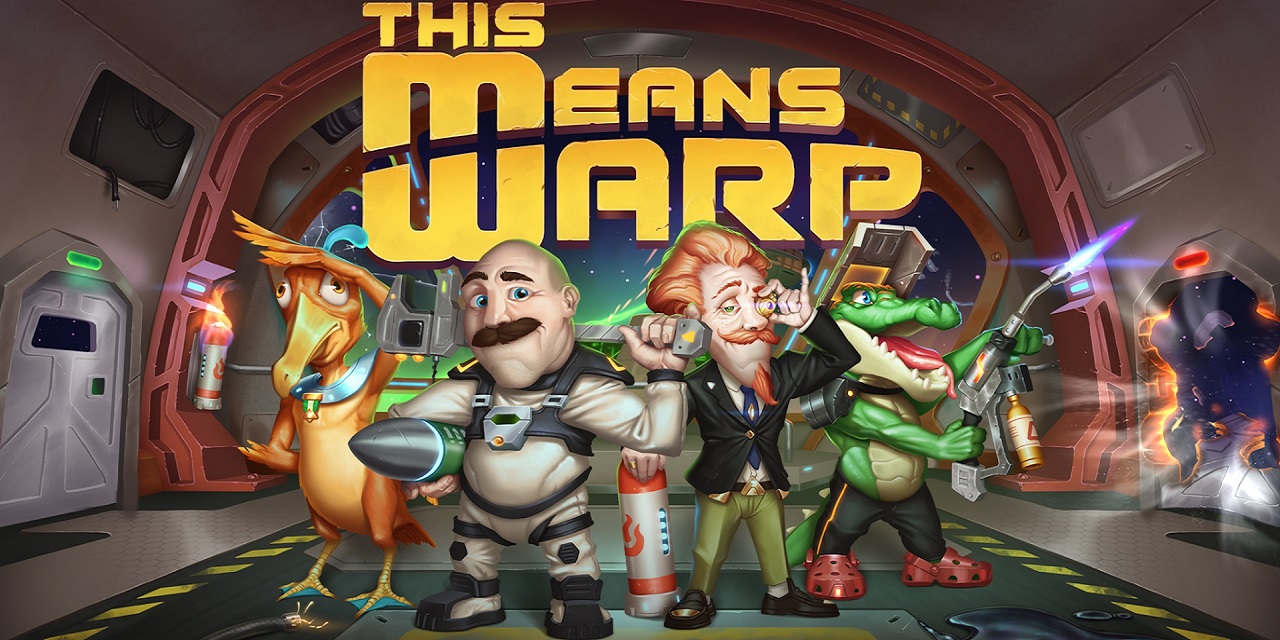Ruinarch flips the script and has the player take the role of the evil storyteller rather than the civilization builder – you get to unleash your inner Randy Random on the hapless denizens of a fantasy world, and it can be a lot of fun if you enjoy setting your own goals and telling a story rather than “winning”. It does, however, fall far short of its potential and is somewhat clunky in its approach which prevents the game from becoming one of the genre greats, unlike the recently reviewed Clanfolk. Perhaps it’s one you won’t come back to regularly, but Ruinarch is definitely fun for a few playthroughs at least so that might dictate the price point you pick it up at if you’re interested. Created by Filipino developer Maccima Games and published by Squeaky Wheel Studio, Ruinarch released into Steam Early Access in August 2020 and just saw its final release on April 24, 2023, so it had a moderate 2.5 years of early access development. Updates were steady throughout this time adding and improving many features leaving a relatively smooth but very obviously indie game at release.
Ruinarch can be described pretty well as “Dungeon Keeper for Rimworld” or to say that you’re the storyteller Randy Random tormenting a hapless Rimworld player. In yet more words, you are the evil guy using minions and spells to accomplish your nebulous yet nefarious plans by screwing with your fellow residents of whichever fantasy world you find yourself upon. The core gameplay loop is quite loose however and to be enjoyed requires the player to get into roleplaying somewhat where you decide on your own objectives and focus on working towards them with specific tools rather than just using every ability on cooldown. This is helped by the archetype selection and ability to choose between different upgrades, but it can also leave you as a Necromancer with very little in the way of undead at your command.
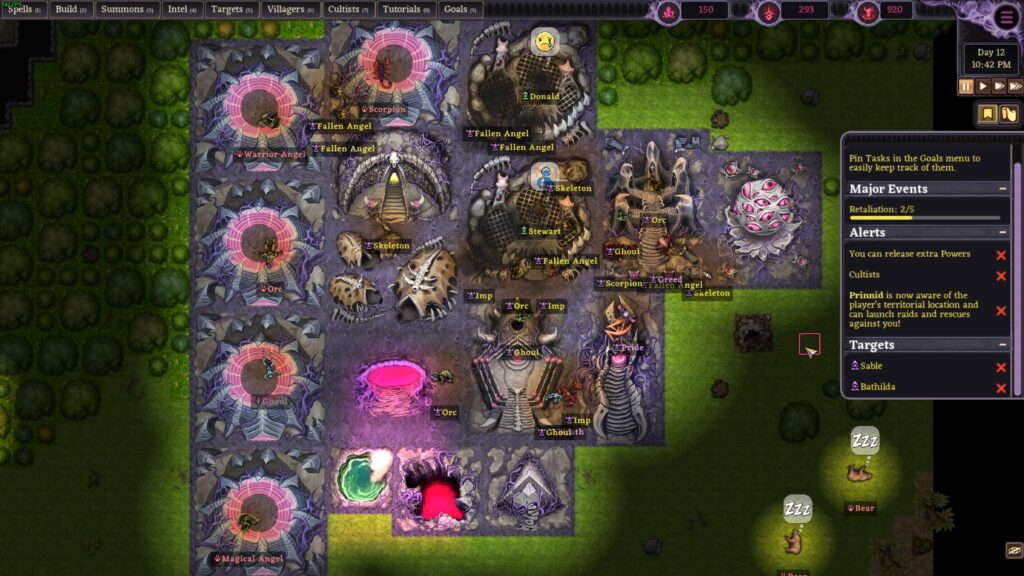
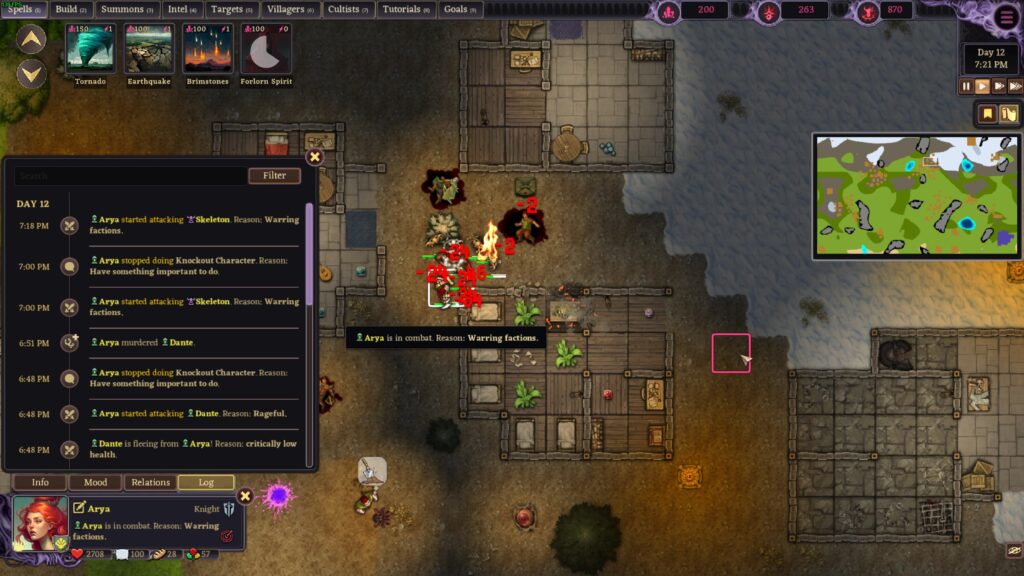
The ability selection feels too limited and is not different enough for each archetype. The Necromancer is guaranteed to get the Raise Dead spell and the Crypt building allowing for Skeleton minions, but the other archetypes can get these too. There aren’t enough options to fully specialize a playthrough and most games will use many of the same tools regardless of archetype. A much larger selection of abilities would really help the longevity of the game, as it becomes repetitive after a few games. It also feels like there should be more advancements as you can fully develop your archetype within a very short time. Once you reach this point it’s just waiting for your mana to regenerate to cast spells and send your minions on missions.
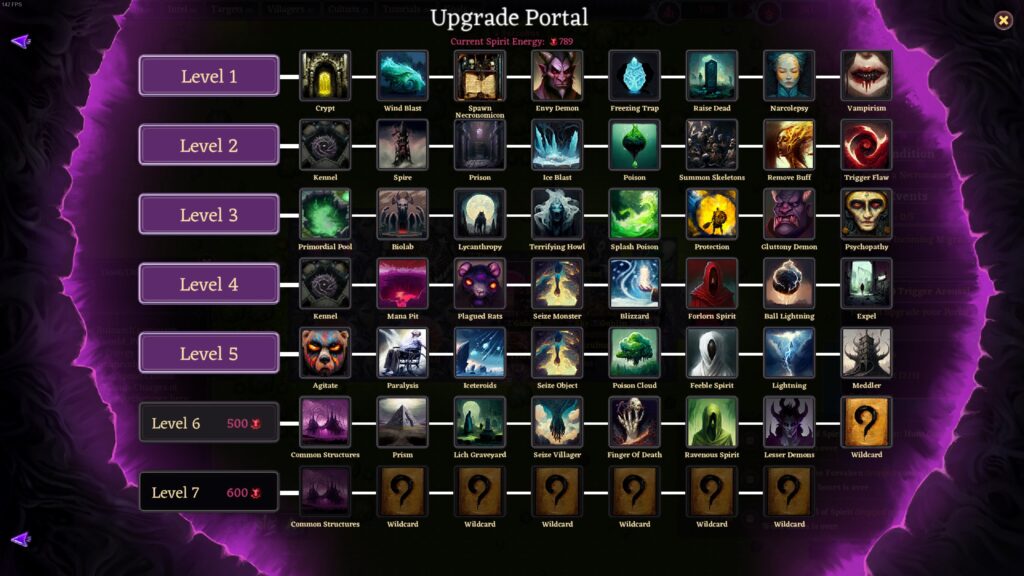
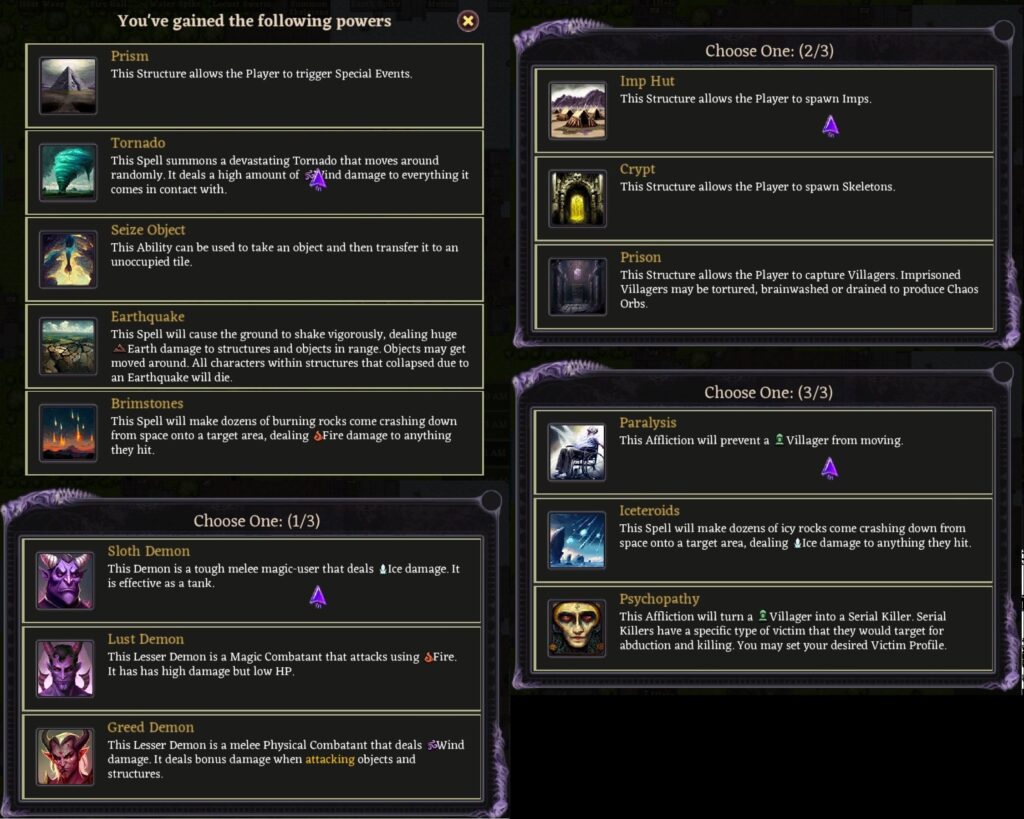
The good guys are pretty well fleshed out however, with up to two kingdoms per map and up to four villages at the start of the game, and new villages can be created by NPCs who have a lot of actions they can do. The good guys each have a class, from basic farmers up to monster taming druids and spell casting mages. Their information is hidden by default, you need to spend one of your resources to learn about each individual which promotes examining potential targets or problems and planning long-term around them – and even trying to save their lives.
I have had to save the life of a human I inflicted with vampirism from being eaten by trolls which was cool emergent gameplay. They will also create quests and form parties to accomplish objectives, from slaying a wyvern in the ruins to investigating reports of undesirable neighbours (you). The migration system can make the humans feel a little trivial as you can kill a bunch and then a new wave of them will appear, but that could just be me not fully understanding the at times very opaque systems yet.
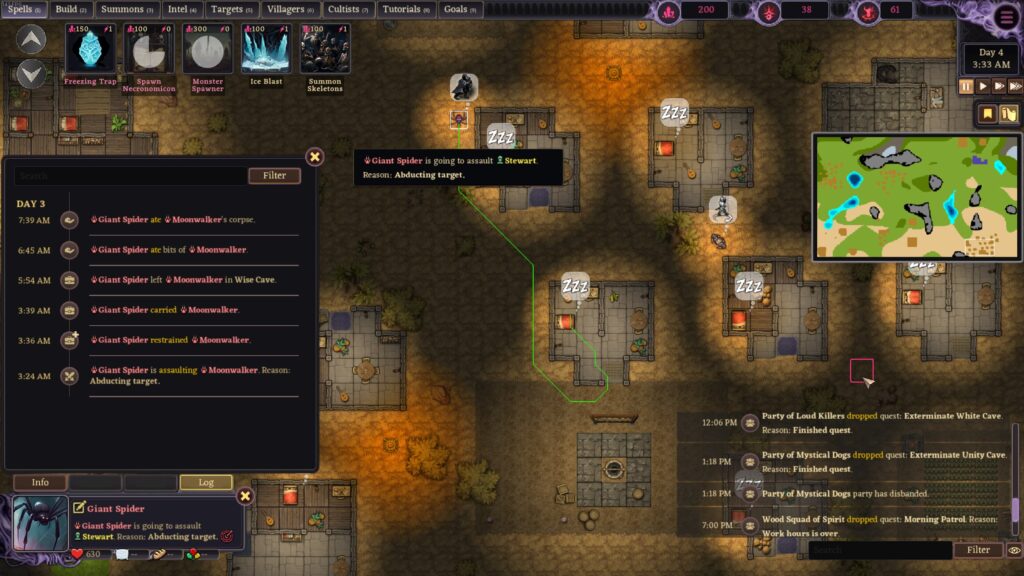
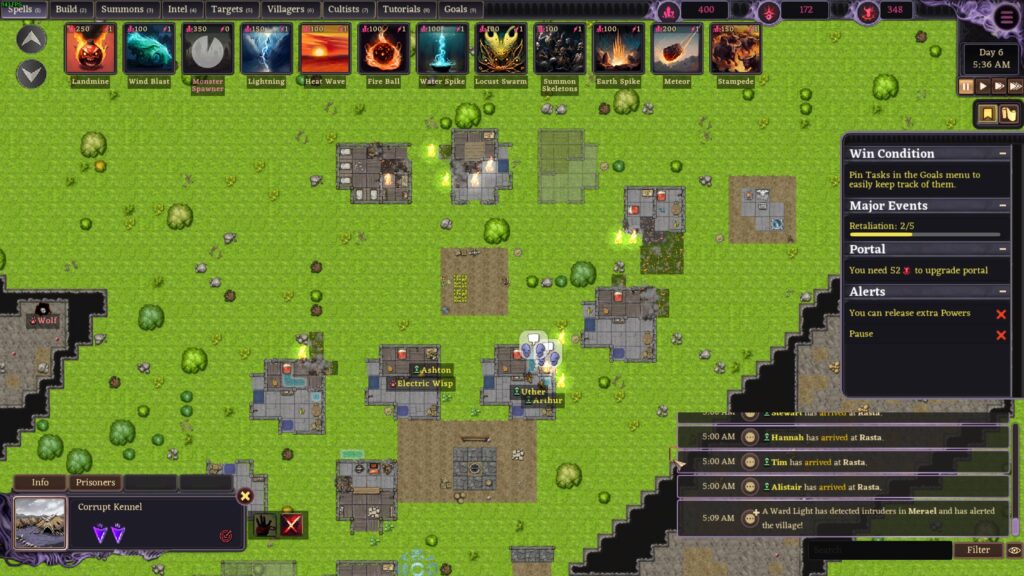
There are other beings on the maps ranging from farm animals up to dragons which can be interacted with in different ways. You can build kennels to claim a monster type for your own usage with each kennel spawning up to three minions of that type at a time. Then place monster spawners to greatly increase the number of monsters and agitate them to prompt an attack on the mortals. Minions from kennels will defend your base and go on missions such as capturing villagers, scaring villagers, hurting villagers or destroying villagers’ property… wait… are we the baddies? *cough* Of course not, not sure what I was thinking there – it’s the villagers that are in the wrong, and they totally deserve everything they have coming to them!
There are quite a few types of minions and only a small selection will be on each map so you won’t always get what you want, but some of them can be pretty damn cool. I particularly enjoyed the humans summoning Angels to attack me, capturing one and then being able to send Fallen Angels back at them. Tied into an above complaint, I’d really love to be able to better theme playthroughs such as by using greenskin armies of orcs, goblins and trolls, or undead armies with skeletons, ghouls, and ghosts but it’s not as straightforward as you might hope. You usually need to get a weird mix like trolls, giant spiders, and wisps which doesn’t feel great.
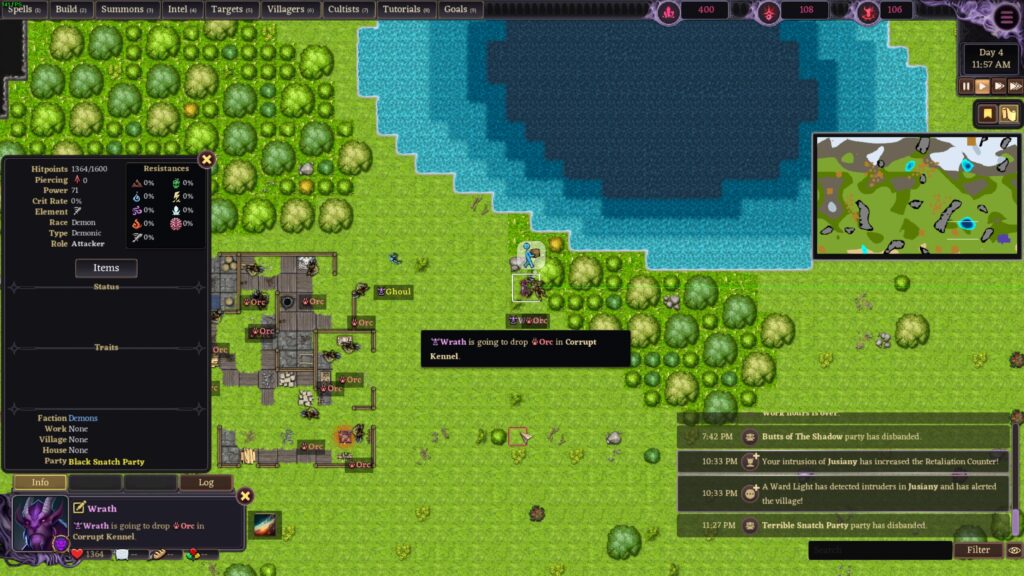
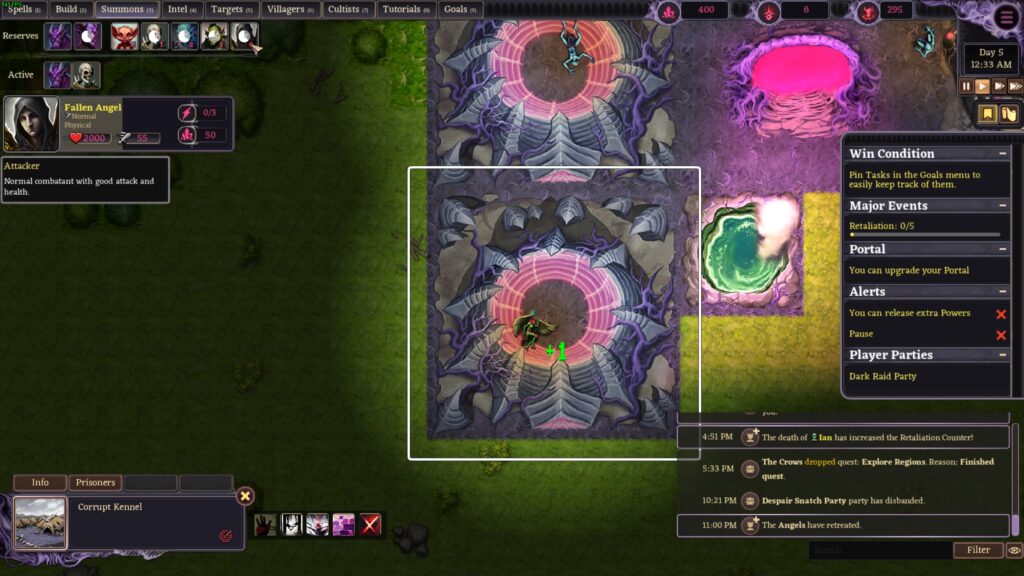
A good amount of fun can be found in Ruinarch, but it takes a certain type of player I think and definitely won’t appeal to most players. You need to be able to roleplay your own victory conditions and enjoy the playstyle of being a bad guy screwing with the mortals, not just genociding them. The game has a lot of potential, but it doesn’t feel like it will reach it, leading the game to be a conditional recommend at a price point you think you’ll get an acceptable amount of value out of – if you can get into the game to begin with. A big takeaway from Ruinarch is that there is definitely room for more villain games, especially in the survival city-builder genre. I enjoyed my time with it and will definitely pick it up now and again, but I hope the developer continues to work on it and unlock more of its potential.
This review utilised a key provided by Player Two PR and Ruinarch is available on Steam now.
#roundtablecoop

